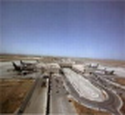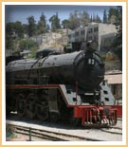|
|
|
Conference Venue
 Amman, is the capital city of the Hashemite Kingdom of Jordan, a city of 2,125,400 inhabitants (2005 estimate), and is located in a hilly area of north-western Jordan. The city was originally built on seven hills, but it now spans over an area of nineteen hills (each known as a jabal or "mountain"). The main areas of Amman receive their names from the hills and mountains on whose slopes they lie.
Amman, is the capital city of the Hashemite Kingdom of Jordan, a city of 2,125,400 inhabitants (2005 estimate), and is located in a hilly area of north-western Jordan. The city was originally built on seven hills, but it now spans over an area of nineteen hills (each known as a jabal or "mountain"). The main areas of Amman receive their names from the hills and mountains on whose slopes they lie.
In the 13th century BC Amman was called Rabbath Ammon or Rabat Amon by the Ammonites. Being the capital of the Ammonites around 1200 BC, it was also referred to as "the City of Waters". It was later conquered by the Assyrians, followed by the Persians, and then the Greeks. Ptolemy II Philadelphus (283-246 BC), the Hellenic ruler of Egypt, renamed it Philadelphia in the 3rd century BC,(Greek for "The Brotherhood Love"). The City later came under Seleucid as well as Nabataean rule until the Roman General Pompey annexed Syria (AD 106) and made Philadelphia part of the Decapolis League - a loose alliance of ten free city-states, bound by powerful commercial, political, and cultural interests under overall allegiance to Rome.
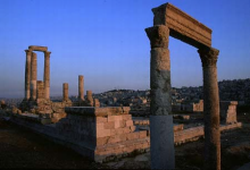
|
Under the influence of the Roman culture, Philadelphia was reconstructed in typically grand Roman style with colonnaded streets, baths, an Amphitheater, and impressive public buildings. In 324 AD, Christianity became the religion of the empire and Philadelphia became the seat of a bishopric during the beginning of the Byzantine era. One of the churches of this period can be seen on the city's Citadel. |
The city declined somewhat until the year 635 AD. As Islam spread northwards from the Arabian Peninsula, the land became part of its domain. Philadelphia was renamed Amman during the Ghassanian era, and flourished under the Caliphates (with nearby capital) of the Umayyads (in Damascus) and the Abbasids (in Baghdad). It was then destroyed by several earthquakes and natural disasters and remained a small village and a pile of ruins until the Circassians settlement in 1887. The tide changed when the Ottoman Sultan decided to build the Hejaz railway, linking Damascus and Medina, facilitating both the annual haj pilgrimage and permanent trade, putting Amman, a major station, back on the commercial map.
|
In 1921, Abdullah I chose Amman as seat of government for his newly-created state, the Emirate of Transjordan, and later as the capital of the Hashemite Kingdom of Jordan. As there was no palatial building, he started his reign from the station, with his office in a train car. Amman remained a small city until 1948, when the population expanded considerably due to an influx of Palestinian refugees from the occupied territories. Amman has experienced exceptionally rapid development since 1952 under the leadership of two Hashemite Kings, Hussein of Jordan and Abdullah II of Jordan. |

|
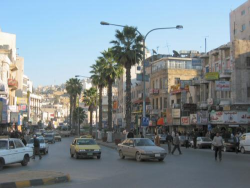 
|
The city's population continues to expand at a dizzying pace (fueled by refugees escaping the wartime events in the occupied territories and Iraq). The city received refugees from these countries on a number of occasions. The first wave of Palestinian refugees arrived from the occupied territories in 1948. A second wave after the Six Day War in 1967. A third wave of Palestinian and Jordanian and South East Asians, working as domestic servants, refugees arrived in Amman from Kuwait after the Gulf War of 1991. The first wave of Iraqi refugees settled in the city after the first Gulf War. A second wave also began arriving after the invasion and occupation of Iraq in 2003. During the last 10 years the amount of new building within the city has increased dramatically with new districts of the city being founded at a very rapid pace (particularly so in West Amman), straining the very scarce water supplies of Jordan as a whole, and exposing Amman to the hazards of rapid expansion in the absence of careful municipal planning. |

Amman is also blessed by the fact that it is located in the vicinity of a number of important historical sites, such as Petra (The Pink City), Jerash, Madaba, Mount Nebo, Kerak, Wadi Rum...to many to mention here, and some of which we will visit as part of the MESM'2011 social programme. See some examples below.
|
|
|
|
Parts of this text were copied from 
Conference Location
|
|
The conference will be held at the The Arab Open University/Jordan Branch. |
Getting to Amman
By Plane |
The city's main airport, Queen Alia International Airport, is situated about 30 minutes south of Amman and hosts the majority of the air travel to and from the country. Besides Royal Jordanian, more than 20 international air carriers fly into Queen Alia International Airport located 35 km south of Amman. The flying time from the major European cities is about four hours. The easiest way to get to downtown Amman from Airport is by taxi; the Journey takes 30-45 minutes, the fare is about 15JD which is equivalent to around $22. However, shuttle buses to the city centre bus station also available, leaving the Airport every half-hour.
Taxis are readily available outside the terminals. Shuttle buses also link QAIA with Amman's Abdali city center terminal every half-hour between 06.00 and 23.00 and every hour between 23.00 - 06.00.
Also located in Amman, Marka Airport mainly serves as a regional airport servicing domestic and nearby international routes. Home to airlines such as Royal Wings, Jordan Aviation, and Arab Wings, Marka Airport is operational 24 hours a day.
As Jordan's gateway to the Red Sea region of Aqaba, King Hussein International Airport (KHIA) is approximately a 45 minute flight from either of Amman's airports. Serviced by national and international carriers, KHIA is quickly growing to be a regional hub for both the holiday and business traveler alike. |
By Train |
The Hejaz Railway is a century old rail line that was used primarily for pilgrims to reach the holy city of Mecca and Medina but now the rail line is basically used by tourists. There are new projects that are being built to add more rail-lines in the Kingdom, most of which will go through Amman. |
By Bus and Taxi |
By land, the city has frequent bus connections to other cities in Jordan as well as to major cities in neighboring countries; the latter are also served by service taxis. Internal transport is served by a number of bus routes and taxis. Service taxis, which most often operate on fixed routes, are readily available and inexpensive. The main two bus and taxi stations are Abdali (near the King Abdullah Mosque, the Parliament and Palace of Justice) and Raghadan (near the Roman Amphitheater in Downtown). |
By Car |
Amman has a very extensive highway system that links every part of the city to one another. There are eight circles that one could use to go from one section of Amman to another. All major highways in Jordan pass through Amman as well. You can rent a car from AVIS or Hertz at Queen Alia Airport. |
Useful Maps
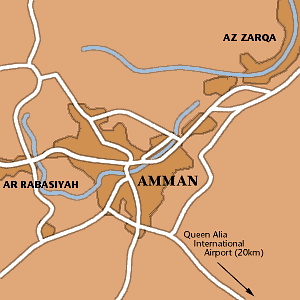
Click on the above map for a detailed Map of Amman with hotel locations
Other Maps: Downtown Amman - Jebel Amman - Amman Map
Visitor's Survival Guide

|
Tourist Facilities: Tourist facilities are widely available, although quality may vary depending on price and location. The local workweek for Jordanian government offices and most businesses is Saturday through Thursday. The embassies in Amman are open Sunday through Thursday. Entry Requirements: A passport and visa are required. Visitors may obtain a visa for Jordan at international ports (also Amman Airport) of entry, not including the King Hussein (Allenby) Bridge, upon arrival, for a fee. Be sure to have some cash with you to exchange money in order to obtain your visa, and again keep some cash when leaving the country to pay the airport taxes. Participants from non- Western European countries please check with the Jordanian Embassy in your country. Foreigners who wish to stay fourteen days or more in Jordan must register at a Jordanian police station by their fourteenth day in the country. Failure to do so subjects the traveler to a one Jordanian dinar (currently U.S. $1.40) per day overstay fine. This fine is usually assessed at departure. |
- Effective July 16, departure tax for Jordanians and non Jordanians departing the kingdom from any airport is JD 20.
- Any tickets issued after this date are inclusive of departure tax.
- Any tickets issued prior to this date are subject to departure tax to be paid upon departure from any airport.
The cost of one entry visa for all nationalities is JD 10 (around $14) for all nationalities and for multiple entries it is JD 20 (around $28).
Groups of five persons or more arriving through a designated Jordanian tour operator are exempted from all visa charges.
Departure taxes for non Jordanians are 5JD, around $7, from any border.
For more info see: Entry into Jordan
Customs Requirements: Internationally prohibited items, such as drugs, firearms, poisons, chemicals, explosives and pornographic materials, among others, may not be imported into Jordan.
Medical Facilities: Basic modern medical care and medicines are available in the principal cities of Jordan, but not necessarily in outlying areas. Doctors and hospitals often expect immediate cash payment for services.





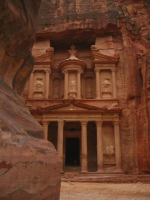

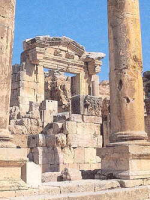
 Tel No: +962 6 5630630
Tel No: +962 6 5630630 Fax No: +962 6 5630610
Fax No: +962 6 5630610 Email:
Email: 


